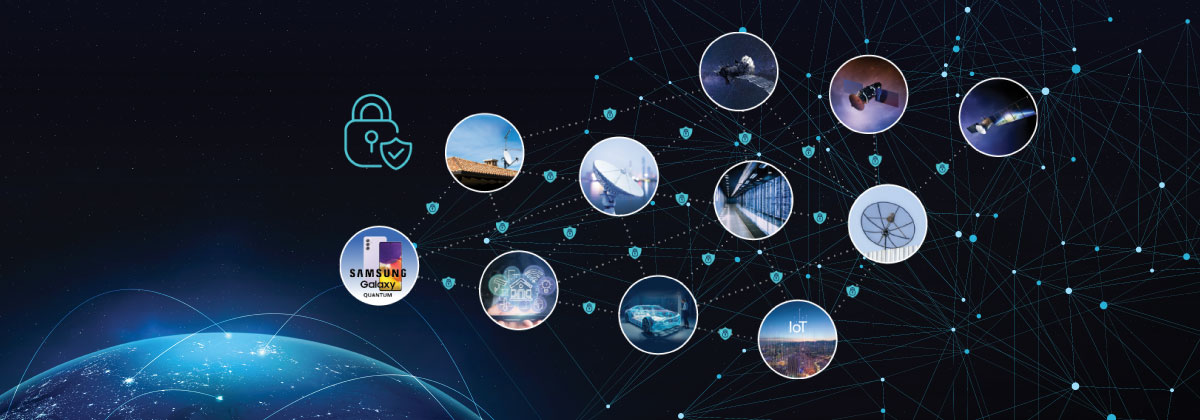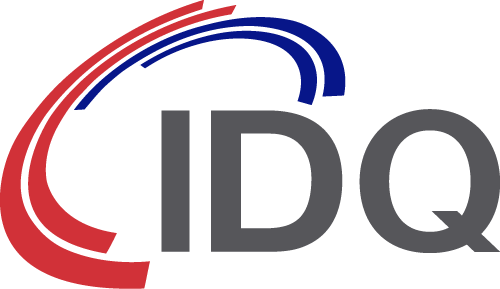Quantum Cyber Security for satellites
In a connected society, the sharing of potentially sensitive data across private and public network infrastructure is part of everyday life. This activity is not without risk. As networks become increasingly sophisticated, they become more difficult to secure. At the same time, threat actors are devising more advanced and persistent cyberattacks, challenging the very fabric of our digital world. Connectivity extends beyond the terrestrial, with much of our communications infrastructure dependent upon a vast network of satellites orbiting the planet. Out of sight does not mean out of mind: the security of satellite communications is now more important than ever. That’s why IDQ are providing quantum cyber security for satellites.

Far from us does not mean safe from us
Satellite communication plays a critical role in a wide range of applications, from telecommunications to weather forecasting, remote sensing, geo-positioning, navigation, and military communication. However, these transmissions can be vulnerable to interception and hacking, leading to potential breaches in security.
Given their critical role in our communications infrastructure, satellites must feature the best possible cybersecurity technology. Orbiting assets are likely to have an extended lifetime, so the hardware has to be as future proof as possible – it’s not like you can just send a tech up to carry out on-site maintenance and security patching. Don’t even get us started on the extreme cost of failure associated with satellites being compromised or rendered useless.
Protecting satellites from cyber-attacks with quantum technology
While encryption is a critical aspect of satellite communication, quantum technology can provide highly secure encryption in space, using Quantum Random Number Generators (QRNGs).
What are QRNGs and why use them?
Quantum Random Number Generators leverage the random properties of quantum physics to generate a true source of entropy, improving the quality of seed content for key generation.
QRNGs are safer and more robust than other traditional sources or entropy (randomness) such as True Random Number Generators (TRNGs). This is because the quantum entropy source is based on a simple, controlled and, most importantly, provably secure physical process.
QRNGs create raw random bits with a high level of entropy, while classical TRNGs rely heavily on deterministic postprocessing to correct a large range of imperfections. Moreover, thanks to a simple monitoring of a few key parameters, QRNGs offer a high degree of protection against external factors that could affect randomness. By contrast, many classical TRNGs are sensitive to environmental changes and thus vulnerable to undetected attacks or failures.
QRNGs always guarantee the highest quality entropy.
How can QRNGs enhance satellite communications security?
QRNGs can enhance cyber security in satellite communications in several ways, mostly because they produce truly random numbers to seed high quality encryption keys:
- Use QRNG to generate truly random keys that are used to encrypt data.
- Use QRNG to create digital signatures that can authenticate satellite communications.
- Use QRNG in combination with QKD to establish secure keys for satellite communications.
- Use QRNG to feed strong keys to your cryptosystem once you’ve upgraded to post-quantum cryptography.
QRNGs fundamentally improve the overall security of satellite systems whilst being more reliable than pseudo or “true” randomness sources.
Introducing the only space-grade QRNG on the market
To address the growing market need for space-suitable sources of entropy, IDQ has successfully developed two variations of its IDQ20MC1 QRNG chip. These highly robust models are the world’s first radiation-hardened family of devices, made to withstand the extreme harshness of the space environment.
Designed and tested to ECSS-Q-ST-60-13, the IDQ20MC1-S1 and IDQ20MC1-S3 serve the entire range of mission profiles for use in space, requiring Rad Hard or Rad Tolerant devices.
- The IDQ20MC1-S3 is a Class 3 device, predominately for use in low earth orbit (LEO) missions.
- The IDQ20MC1-S1 is a Class 1 device, targeted for use in MEO and GEO mission profiles.
IDQ is the first to enable satellite security designers to upgrade their encryption keys to quantum enhanced keys. For more details on the S1 and S3 models, check out the QRNG Chips Range Spec Sheet.
IDQ’s space-grade QRNG at a glance
- Compact Size – IDQ’s QRNG chips are the smallest on the market. Their compact form means they are perfectly suited for use in a wide variety of products, including satellites, autonomous vehicles, drones, and smart devices.
- Robustness – Designed, built, and tested with resilience in mind, IDQ’s QRNG Chips deliver high performance and an extended lifetime of operation, even in the harsh environs of space.
- Cost efficiency – QRNG technology has become more cost-effective in recent years, making it an affordable and accessible solution for satellite providers of all sizes. The cost of implementing QRNGs can be offset by the long-term benefits of increased security and regulatory compliance.
Integrating QRNGs now future-proofs satellite security against emerging threats and technologies, making it a wise investment for the long term and providing peace of mind to customers.



